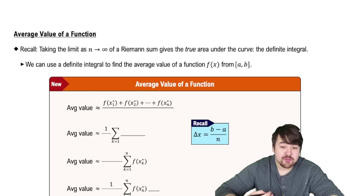Infinite Limits
Find the limits in Exercises 37–48. Write ∞ or −∞ where appropriate.
b. lim x→0⁻ 2 / (3x¹/³)
 Verified step by step guidance
Verified step by step guidance Verified video answer for a similar problem:
Verified video answer for a similar problem:



 6:47m
6:47mMaster Finding Limits Numerically and Graphically with a bite sized video explanation from Patrick
Start learning